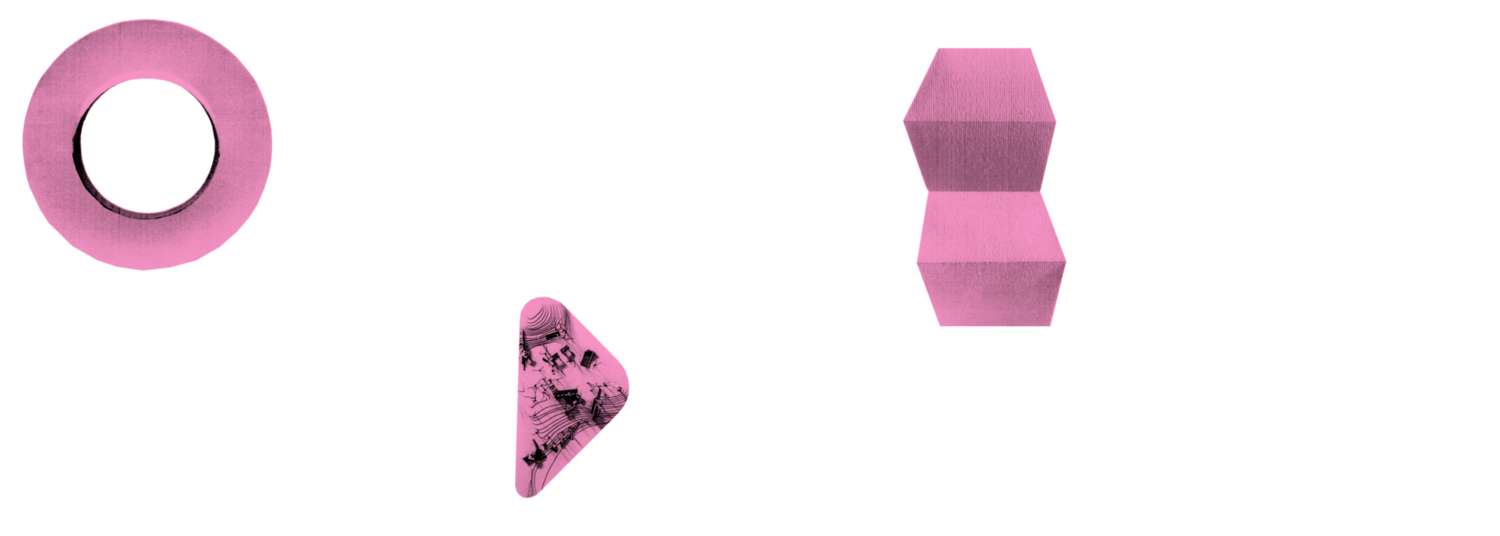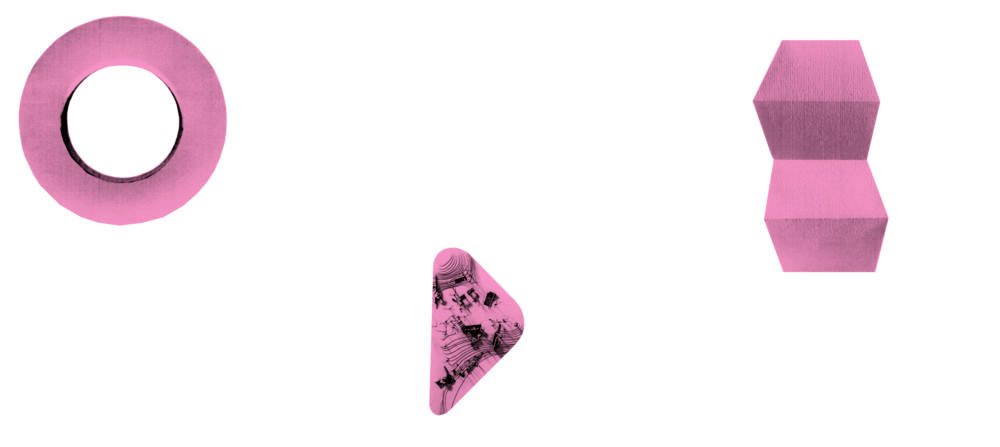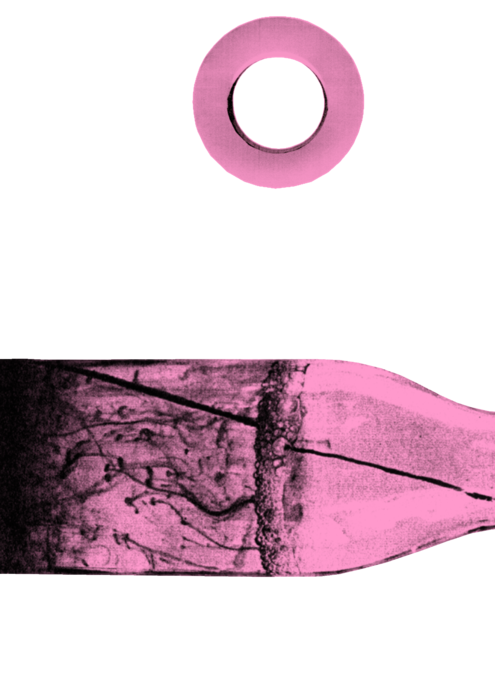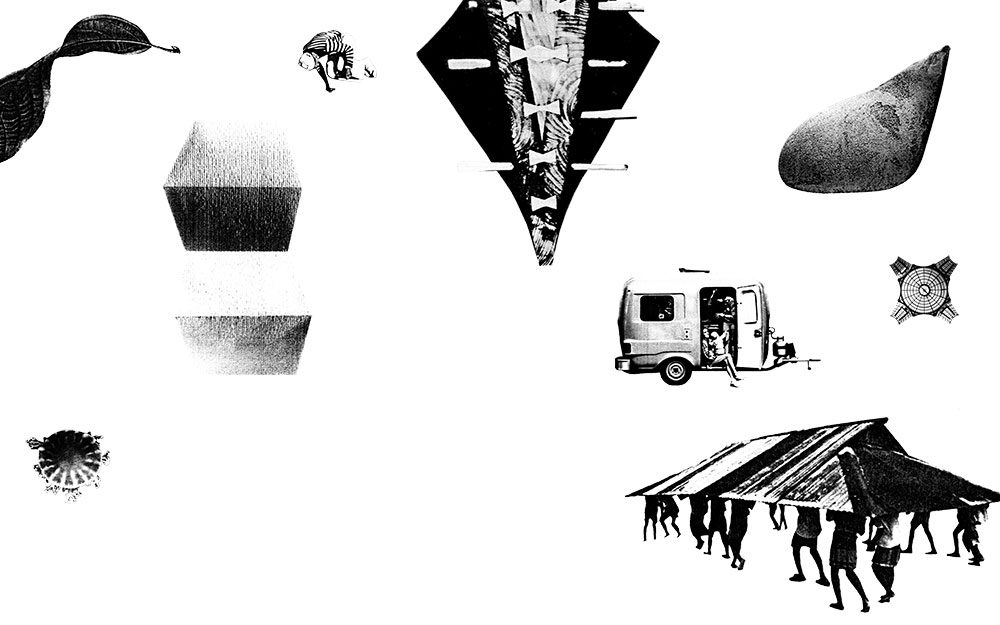CONTENT
Architecture is a material practice, it is an applied art, it is the practice of the corporeal and the spatial. To situate architecture in the field of the applied arts means to recognise architectural design as a speculative practice, or with the words of Sir John Soane to understand architecture as an art of invention.
While disciplines such as mathematics are based on scientific methods and arithmetic formula, which foresee one possible ‘solution’, architectural design instead resembles René Thom’s Catastrophe theory, where designs are discontinuous passages, transitions, which take place, when a system has more than one stable condition or when more than one stable transformational path is available. To design – zu entwerfen – in this case, is the leap from one condition to another one, from one path to another. In the process different paths are confronted and finally one is chosen, not because it is right but as always in practices because it is more promising.
This is the difference between theories and practices, whereas a theory aims at a global application and can exist in absence of matter, material practices such as architecture instead are constantly confronted with the complexity of the world – a building works here, but might not be that suitable for over there.
While disciplines such as mathematics are based on scientific methods and arithmetic formula, which foresee one possible ‘solution’, architectural design instead resembles René Thom’s Catastrophe theory, where designs are discontinuous passages, transitions, which take place, when a system has more than one stable condition or when more than one stable transformational path is available. To design – zu entwerfen – in this case, is the leap from one condition to another one, from one path to another. In the process different paths are confronted and finally one is chosen, not because it is right but as always in practices because it is more promising.
This is the difference between theories and practices, whereas a theory aims at a global application and can exist in absence of matter, material practices such as architecture instead are constantly confronted with the complexity of the world – a building works here, but might not be that suitable for over there.
Relax !
It is in materials, tools and procedures of working practice where the architectural can be found, not in an abstract idea, not in a manual, but in the manual and meta-manual. A tool, material or procedure can be used in the way it was intended to be used or, if necessary, a new way of operation is invented and new solutions become available. Material practices are about availability and ability, about constraints and potentials. Materials as well as the tools and procedures of material transformations, possess each their very own constraints. A material or tool can do certain things very well, but others not very well indeed. Each one has its very own affective potential, prefers certain Bindungen instead of others. But where Bindungen exist, there exist relations, which means there exist spaces. It is through their Bindungen that materials produce spaces or – to say it with other words – the assemblages a material, tool or procedure is able to produce depends from its constraints. Where a constraint is not something disabling, something negative, but rather its opposite, something which suggests a certain terrain of possibilities, a certain space of exploration, something which requires a healthy dose of inventions. Following Arturo Franco we could say, it is OK to use systems, but it is in breaking the system that architecture appears.
In fact architectural design resembles some sort of open toolbox, a toolbox, which has a very effective set of constructive instruments, technics and procedures, each one with infinite applications and ways of operation.
Since this toolbox is so effective, architecture can be produced in working practice alone, without any recourse to anything else. Depending on the situation all it takes might be just a section measuring topography, a maquette experimenting with a collection of materials, a diagram investigating a resource, for a space to be encountered and the architectural to appear.
Inside the medium of the drawing, maquette or notation a spatial condition is fixed long enough to be observed and compared, to be able to investigate its productive potential – a constraint is chosen, measured and expressed and design can start.
Attitude
In fact architectural design resembles some sort of open toolbox, a toolbox, which has a very effective set of constructive instruments, technics and procedures, each one with infinite applications and ways of operation.
Since this toolbox is so effective, architecture can be produced in working practice alone, without any recourse to anything else. Depending on the situation all it takes might be just a section measuring topography, a maquette experimenting with a collection of materials, a diagram investigating a resource, for a space to be encountered and the architectural to appear.
Inside the medium of the drawing, maquette or notation a spatial condition is fixed long enough to be observed and compared, to be able to investigate its productive potential – a constraint is chosen, measured and expressed and design can start.
Attitude
It is about materials, structures and spaces! You do not get one without the other. Spaces and structures are present in materials and vice versa. This is why the architectural can be found in matter already, or more precisely: a whole variety of possible architectures can be perceived in any given material already, an architecture with its precise weight, tactility, spatial quality and possible details, with its Materialhaftigkeit and Objekthaftigkeit. There is a possible architecture to be discovered inside any brick, concrete, wood, as well as inside a tree, inside water, an environmental structure of any kind, a spatial effect such as sound, light and shadow, but more interesting inside any combination between them. All it takes are eyes, which are able to see and hands which are able to do – architecture is an art du faire.
Watch out, everything that is able to define a space is a material and conversely every space is matter. The reason why the architectural can be encountered in a mass, volume, wall, room, house, ensemble, city, tree, forest, platform, lake, mountain, garden, infrastructure and so on, as well as in immaterial effects is because architecture is a question of space. Architecture is about objects and spaces, about effects and devices, where space is that precious potentiality, which is everywhere, but not always present! This is precisely why Le Corbusier was able to introduce his famous book The Modulor by saying that: ‘The word architecture (…) covers: The art of building houses, palaces and temples; ships, cars, railway trucks and airplanes, domestic and industrial equipment and the equipment of trade, the art of typography as it is used in the making of newspapers, periodicals and books.’
Architecture is about a profound affection for the world, it is a certain kind of attitude to perceive space everywhere, to continuously judge the potential of everything, to care for how things look like and for what they can do. Which, from a certain point of view, is the same, since following Bateson form is condensed information.
Work !
Watch out, everything that is able to define a space is a material and conversely every space is matter. The reason why the architectural can be encountered in a mass, volume, wall, room, house, ensemble, city, tree, forest, platform, lake, mountain, garden, infrastructure and so on, as well as in immaterial effects is because architecture is a question of space. Architecture is about objects and spaces, about effects and devices, where space is that precious potentiality, which is everywhere, but not always present! This is precisely why Le Corbusier was able to introduce his famous book The Modulor by saying that: ‘The word architecture (…) covers: The art of building houses, palaces and temples; ships, cars, railway trucks and airplanes, domestic and industrial equipment and the equipment of trade, the art of typography as it is used in the making of newspapers, periodicals and books.’
Architecture is about a profound affection for the world, it is a certain kind of attitude to perceive space everywhere, to continuously judge the potential of everything, to care for how things look like and for what they can do. Which, from a certain point of view, is the same, since following Bateson form is condensed information.
Work !
As with all material practices, architectural design should be allowed to take its turn, to change course. During work, in one of its intermediate steps, a new discovery can be made, a section reveals a possible plan, a material reveals a space, something is discovered and a new direction can be taken.
What is needed is the ability to listen to what is developing, to perceive what is already there, to take back ones own intention in order to perceive the intention of the material setting we are confronted with, to be prepared to grasp these precious moments of court circuite, which while they take place radically change what can be thought and done. Watch out: the medium is never transparent. It will always leave a trace. If used properly it will reveal what cannot be seen without it.
What it takes is an attitude of massive exploring: a sudden turn is made and a possible project can be seen. The trick is to multiply the turns someone takes, to multiply the passages of discovery and to be constantly alert to interpret a new material constellation appearing in front of oneself.
Architectural drawings, sections, plans, maquette, collections, which are already a project in themselves, mysterious objects, with their materiality, form, unknown origin, images of things, spaces and so on, videos, diagrams and notations are therefore some sort of mental tools with which the material encounters thought and operations of translations, transformation, transposition, condensation and assembling can be carried out.
What is needed is the ability to listen to what is developing, to perceive what is already there, to take back ones own intention in order to perceive the intention of the material setting we are confronted with, to be prepared to grasp these precious moments of court circuite, which while they take place radically change what can be thought and done. Watch out: the medium is never transparent. It will always leave a trace. If used properly it will reveal what cannot be seen without it.
What it takes is an attitude of massive exploring: a sudden turn is made and a possible project can be seen. The trick is to multiply the turns someone takes, to multiply the passages of discovery and to be constantly alert to interpret a new material constellation appearing in front of oneself.
Architectural drawings, sections, plans, maquette, collections, which are already a project in themselves, mysterious objects, with their materiality, form, unknown origin, images of things, spaces and so on, videos, diagrams and notations are therefore some sort of mental tools with which the material encounters thought and operations of translations, transformation, transposition, condensation and assembling can be carried out.
 © ALADlabs
© ALADlabs
Accuracy
Architectural design is an outcome of an inventive process, which is the most complex activity of the human brain. In order to design the brain is continuously connected to the material environment, to what is going on now, could be going on now, might be going on tomorrow (what had been going on yesterday is somehow always present). Any situation where the brain could be switched off, when something is copied, when a method, formula or typology is followed, should be avoided at all costs.
Architecture is a phantasy of precision, not only in its existence but also in its very conception. The precision necessary to control a spatial effect and its productive potential carries over to its construction. The more direct the experience the more powerful and subtle the discovery. There should be no distance between thought and matter, which is why accuracy in thought and doing is so fundamental. Get rid of theoretical overheat; trust architecture, less waffle more doing!
Architecture is a phantasy of precision, not only in its existence but also in its very conception. The precision necessary to control a spatial effect and its productive potential carries over to its construction. The more direct the experience the more powerful and subtle the discovery. There should be no distance between thought and matter, which is why accuracy in thought and doing is so fundamental. Get rid of theoretical overheat; trust architecture, less waffle more doing!
Translations
Inside of architectural practice there are constantly processes of translation and compression, movements, which are not dissimilar to the forces of Verschiebung and Verdichtung, which govern our dreams. Thanks to these hidden manoeuvres, architecture is enabled to verify developments, which occur outside of it. Therefore it is fundamental to comprehend architecture inside the framework of all the disciplines with which it is constantly exchanging, the applied arts, the visual arts and landscape in particular. Of central importance here is the fact that the practice of architectural design with its technics and tools is so effective that developments taking place outside of architecture can be channeled through the field of architecture, where they can be processed. What survives the translation, on what the architectural tools are effective, is retained and becomes part of architecture.
Everything can be material for architecture, there is no exclusion, as long as it defines a space it will always have an affective dimension as well as a productive effect. Which is why there is always the possibility to grasp mutually distinct realities, to overlap them and to draw a spark from their juxtaposition. The question is only to look at a rock from the point of view of the mason or geologist and not from the point of view of a cook.
Everything can be material for architecture, there is no exclusion, as long as it defines a space it will always have an affective dimension as well as a productive effect. Which is why there is always the possibility to grasp mutually distinct realities, to overlap them and to draw a spark from their juxtaposition. The question is only to look at a rock from the point of view of the mason or geologist and not from the point of view of a cook.
Kunst
Architecture’s full potential resides in its subversive dimension. Context only brings us that far. In order to activate hidden productive forces or to introduce new ones a leap has to take place. What is effective today and here is not effective in another place or time. What can be done once should be done only once. It is safe to assess that the following time requires a new invention. The secret is to realise that things can be simple. It does not take much: To place a stool is already architecture. The question is how it was placed. What condition does it create? What relations become possible?
Stephan Jung
KEYWORDS
AVAILABLE
SAFT 01 EXPERIMENTS
is also available as part of:
Buy it now !



